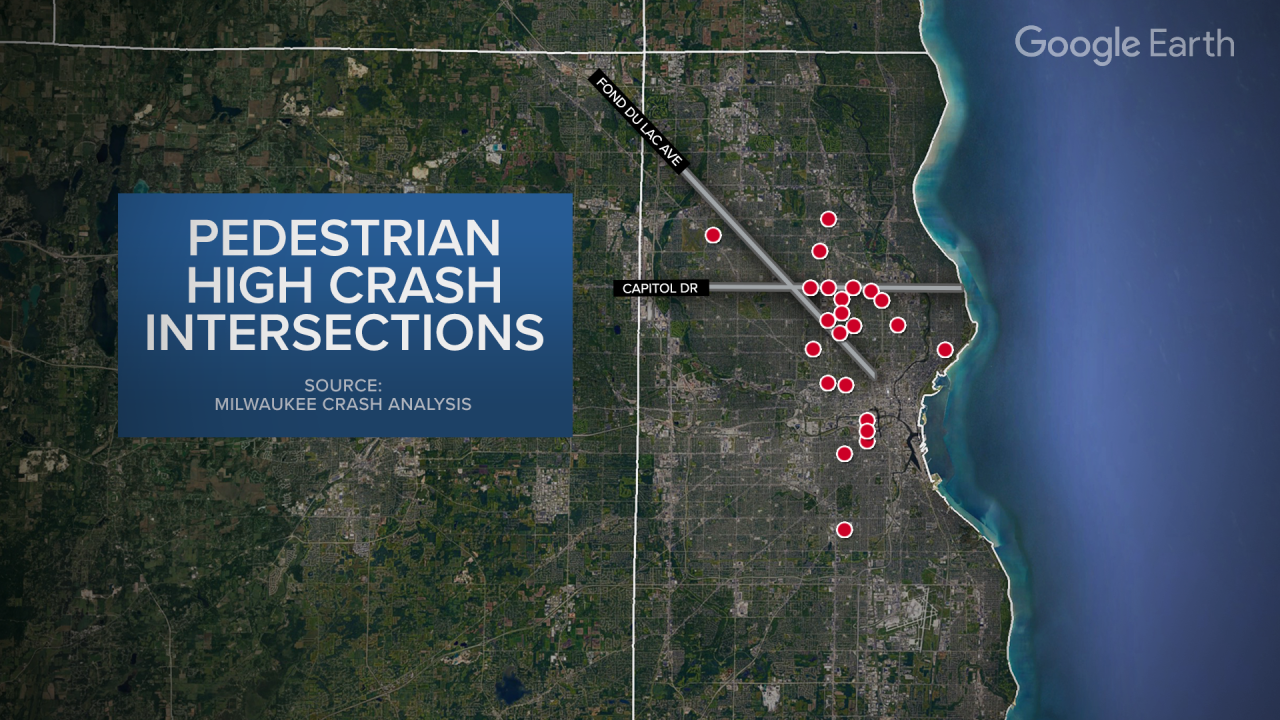MILWAUKEE — New data from the Milwaukee Police Department shows fatal crashes are up 43 percent compared to this time last year.
With deadly crashes on the rise, how much is Milwaukee’s reckless driving problem costing society?
A new study details the financial impact crashes have at the riskiest intersections in the city.
One car crashes into Rose Lane’s home, two hit her tree and far more than three smashed into her fence.
“Everybody was coming by and they was seeing the cars in the yard,” she said. "They was like, ‘your house again?’”
After filing insurance claims and spending a fortune to repair damages, Lane replaced her fence for the last time with a bigger barrier. Giant boulders now line her corner lot property.
"This one right here I got first because I didn't even want to sit on my front porch,” she said. "I've came out of my pocket with so much money."
A new city report shows the thousands Lane spent on property damage pales in comparison when you look at the broader cost of crashes to the community as a whole.
The 2023 Milwaukee Crash Analysis includes a study that estimates societal costs by reviewing car crashes from 2015 to 2019 at what are considered to be the riskiest intersections.
Those high crash intersections are broken down for three modes of transportation: driving, walking and biking.



It shows 14th and Atkinson is the worst for pedestrians, 91st and Appleton tops the list for bikers, and 27th and St. Paul comes with the highest cost for drivers at nearly $51 million.
Knowing each crash comes with a different set of circumstances and correlating costs, the study used the National Highway Traffic Safety Administration’s formula to estimate the total cost of crashes.
That includes tangible expenses like property damage, medical bills and lost wages. It also factors in the intangible of pain and suffering and its impact on quality of life.
When you add up high crash intersections for bikers, pedestrians and drivers, the report shows the estimated cost to society was $1.2 billion for the five year period. That figure doesn’t count the thousands of other intersections in the city.
"I would think that that number is low,” said injury attorney Benjamin Wagner.
Wagner has represented thousands of people who have been injured along with families of people killed in crashes.
"There are hidden costs that are not reflected in that number which make that number small in reality,” he said.
Wagner says huge hidden costs fall on hospital systems with the driver and the victim do not have insurance. Another is when an employee is unable to work and pay their bills.
"There's also a significant cost and burden to businesses and employers because they lose a valued employee and if they don't show up to work because of being hurt in a crash, they're not getting the productivity of that employee,” he said.
The report suggests crashes with just property damage cost society about $11,000 on average. It says serious injuries cost the community more than $600,000. That figure jumps to $11 million when a crash results in a death.

"The human cost of being a victim in a car crash whether it be a family experiencing a death or a serious injury is very hard to quantify,” Wagner said. “You lose the relationship of a mom or a dad or you lose the relationship of a child and the mental health aspect of it is often overlooked but it's substantial."
The study and its method isn’t to suggest the cost of a life is quantifiable in dollars, rather it’s designed to show cities like Milwaukee where traffic calming measures or road reconstruction would have the greatest benefit to prevent the worst outcomes.
It’s about time to watch on your time. Stream local news and weather 24/7 by searching for “TMJ4” on your device.
Available for download on Roku, Apple TV, Amazon Fire TV, and more.





